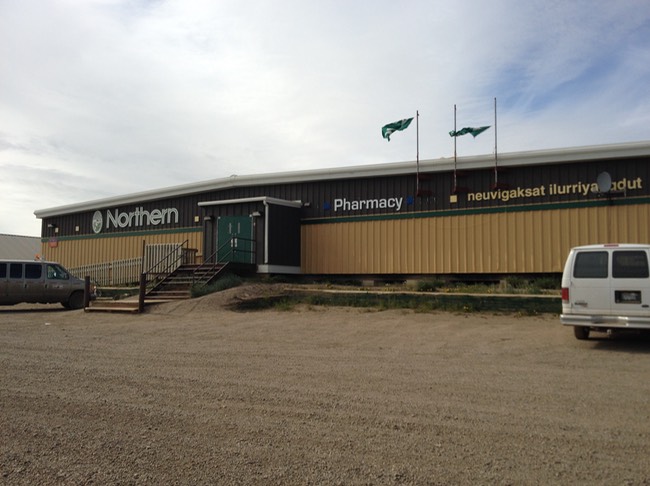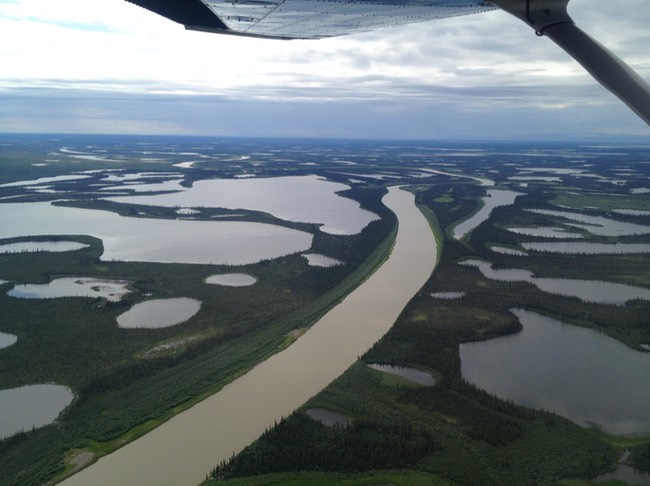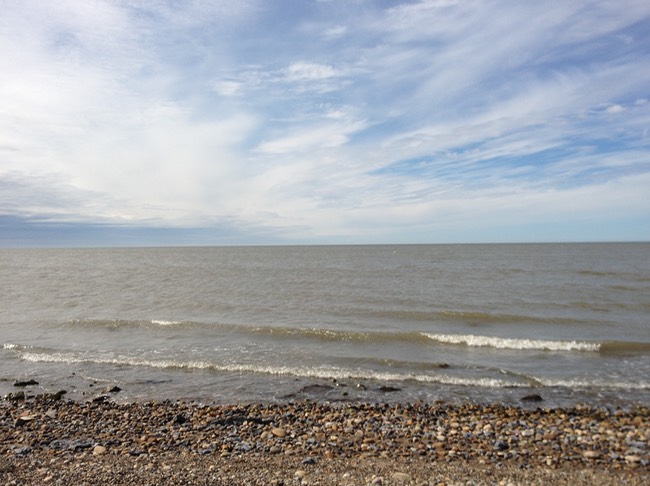
During the entirety of our Arctic adventure, we were inescapably haunted by the words and melody of Stan Rogers’ ode to the north, “Northwest Passage”, and at no time more than the afternoon we spent in Tuktoyaktuk, on the edge of the Beaufort Sea. An extension to the Dempster Highway is currently under construction, built into the permafrost; but for now, summer visitors still fly across the delta in small commercial planes or charters. We went in a Cessna 172 piloted by a young man from Ontario who is enjoying adventure in the arctic while getting his flying hours in.

The exhilaration of the trip is overwhelming, even if you are, as I am, distinctly nervous in small planes. You get stunning views of the delta and surrounding tundra, including the famous “pingoes”, humps in the ground pushed up by the permafrost. The sight of that massive plain broken up by water is unforgettable.

A typical tour around the predominantly-Inuit hamlet is run by a chatty local guide. My memories of our visit twenty years ago and the young man who showed us around the community then, sharing anecdotes about himself and his neighbours (he pointed out one of the churches and mentioning that the minister “was wondering where I was this morning”), were not dimmed by our guide on this occasion. She pointed out both the giant pingo (“the biggest in North America”) and the satellite dishes (“for our HD TV and our high speed Internet”). She showed us the little Catholic church, where there used to be a Father, but he recently died, so now there is a Nun, and “I see she has her satellite dish in already”!

Many of the inhabitants still earn some or most of their living by hunting, trapping, and fishing. We were taken down into the community freezer, thirty feet down a slippery wooden ladder into the permafrost. This was both scary and a bit smelly, but fascinating all the same, to see the walls sparkling like a fabulous diamond mine all around the little wooden doors that led to each person’s meat locker. Finally, our guide took us back to her home, where we met her husband and visited their tent, in which they had on display the skins of various animals they had trapped.
It’s a fascinating glimpse of a tiny community (population sits somewhere around 800) perched on the edge of the habitable world. Its culture is a strange combination of the traditional (subsistence living, community activities) and the modern (satellite TV, cell phones, snowmobiles). Its people are isolated in the ways of their ancestors, and yet connected to the rest of the world in much the same way as are we all.
Ah, for just one time, I would take the Northwest Passage,
to find the hand of Franklin reaching for the Beaufort Sea.
Tracing one warm line through a land so wild and savage,
and make a northwest passage to the sea.
– Stan Rogers
Photos: Tuktoyaktuk’s main street; the Northern Store; the Mckenzie Delta; Anglican Church; community freezer; the Beaufort Sea (Photo 1 N. Wilkes; photo 3 B. Wilkes)

